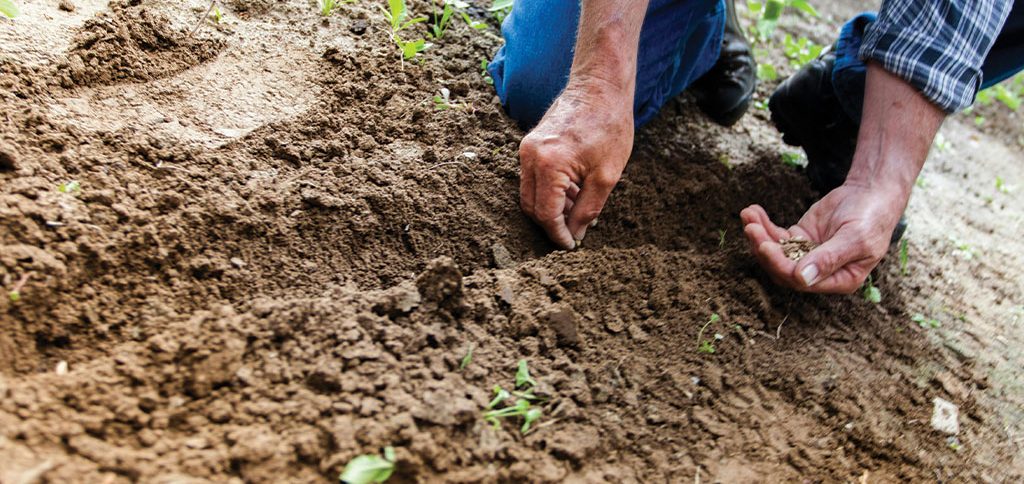Wondering if gardening is a pocket-friendly goal? Is cultivating your own veggies genuinely more economical than store-bought ones? Vegetable gardening involves some upfront costs—seeds, plants, soil, supplies—which, if not managed wisely, might turn into a pricy hobby rather than a budget-friendly one.
However, fear not. With frugal gardening techniques that can be the game-changer between a garden that saves you money and one that drains your wallet.
That’s where smart gardening kicks in.
21 Money Saving Gardening Tips that Fit Your Budget.

1. DIY Compost
Composting is a simple yet impactful way to recycle kitchen scraps and yard waste. By creating your own compost, you not only reduce waste but also produce nutrient-rich soil conditioner for your plants. It’s a sustainable cycle that transforms organic matter into a valuable resource without spending a dime.
Creating compost is a breeze. Just gather materials you have around, toss them into a sizable pile, and you’re good to go.
Also, include things like disease-free garden green waste, wood mulch, eggshells, chicken droppings and shavings, vegetable scraps, and fall leaves. Even if it doesn’t generate much heat, the composting process still works wonders. Keep it simple, don’t overanalyze, and you’ll end up with wonderfully broken-down compost.
2. Homemade Pest Repellents
Homemade pest repellents offer a natural and budget-friendly way to protect your garden. Garlic spray, made by steeping crushed garlic cloves in water, acts as a potent deterrent without harming your plants. Neem oil, a versatile solution derived from the neem tree, disrupts the life cycle of pests.
Citrus peels, especially from oranges and lemons, scattered around the garden create a natural barrier against pests like ants. For a spicy solution, chili pepper spray made by mixing chopped chili peppers with water and soap is an effective pest repellent. Essential oils like peppermint, lavender, and citronella diluted in water provide a fragrant and insect-resistant blend.
3. Mulching with Newspaper
Mulching with newspaper is a clever and inexpensive way to care for your garden. Instead of going for pricey mulch, you can use newspapers to create a protective layer around your plants. Mulching not only helps to suppress weeds but also conserves moisture, making it a double-win for your garden.
To start, lay down a few sheets of newspaper around your plants, ensuring they overlap to create a solid barrier. Cover the newspaper with a layer of organic material like straw or wood chips. The newspaper acts as a natural weed deterrent, blocking sunlight and preventing weed growth. Plus, as the newspaper breaks down over time, it adds organic matter to the soil, enhancing its fertility.
4. Conserve Water
Conserving water in your garden is a smart and eco-friendly practice that not only benefits your plants but also helps you save money. Simple strategies like collecting rainwater in barrels during wet weather provide a free and sustainable water source for your garden.
Moreover, using mulch around your plants helps retain soil moisture, reducing the need for frequent watering. Choosing drought-tolerant plants that can thrive with less water is another effective method to conserve water.
5. Perennial Plants
Perennial plants bring lasting beauty to your garden, returning reliably year after year. Unlike annuals that need replanting each season, perennials offer a cost-effective and hassle-free choice for gardeners. With a variety of shapes and colours, these plants provide a diverse and lasting look.
What sets perennials apart is their lasting nature. Once established, they require less attention and provide both convenience and budget savings. Their strong root systems contribute to soil stability, adapting well to changing environmental conditions.
6. Create Your Homemade Soil Blend
Mixing your own soil at home is a great and budget-friendly way to take care of your plants. Just mix things like compost, peat moss, and perlite, and you can make soil that’s perfect for your garden. Doing it yourself lets you make sure the soil is just right for your plants to grow their best.
7. Homemade Fertilizers
Explore the world of homemade fertilizers to give your garden a nutrient-packed boost without spending too much. From leftover kitchen stuff like eggshells and coffee grounds to natural goodies like banana peels and seaweed, these DIY fertilizers are budget-friendly and planet-friendly. Mix up your own nutrient-rich blends to keep your plants happy and blooming.
8. Cultivate High-Yielding Varieties
To save money and get a lot from your garden, choose plants that give you plenty. Some plants might look cool, like Molly Magic potatoes, but they’re small and not great for big harvests. Stick to the ones that are known to give you lots of veggies—those are the ones you want in your garden.
9. Go for Seeds, Not Plants
Choose to buy seeds instead of potted plants. When you get a packet with 50 seeds, you have the chance to grow 50 plants, though not all seeds may sprout. Quick and easy-to-grow varieties like zinnias, morning glories, and sunflowers make the process even simpler.
10. Creative Plant Containers on a Budget
Almost anything can become a plant container! Consider using items like wheelbarrows, old boots, colanders, pots, tin cans, or even paint containers. Just make sure you can drill holes in the bottom for drainage. Not only will these unconventional containers add charm to your garden, but they also won’t cost you any money.
11. Collect Seeds
Save money and enjoy a sense of accomplishment by collecting seeds from your garden. Let your plants go to seed, allowing them to self-seed or gather the seeds for future sowing. It’s a straightforward process, especially with plants like marigolds, nasturtiums, Namaqualand daisies, sweetpeas, and veggies like runner beans, squash, and tomatoes.
12. Brick Borders for Your Garden
Keep an eye out for ongoing renovations in your neighborhood, and don’t hesitate to ask for broken or damaged bricks. These can be repurposed to craft pathways and borders for your garden beds. For a slender, curved edge, arrange bricks horizontally end to end; for a broader look, lay them side by side.
13. Propagate your Plants
Propagating make more plants for your garden. It’s a simple process where you create new plants from your existing ones. You can do this by taking cuttings, dividing, or even growing from seeds. It’s a budget-friendly way to expand your green family and add more life to your garden.
You have the option to split perennials like daylilies, agapanthus, and dietes, or create new plants by taking cuttings from shrubs such as pelargoniums, hydrangeas, and rosemary.
14. Make Plant Support
Creating your own plant supports is a fun and practical way to give your growing plants the lift they need. Whether it’s simple stakes for your tomatoes or a more intricate trellis for climbing plants, homemade plant supports are budget-friendly and customizable. Gather materials like bamboo, and wooden stakes, or even repurpose old wire fencing to design supports for your garden’s needs.
15. Utilize Affordable or Free Materials for Raised Beds
Creating raised beds doesn’t have to break the bank. Opt for cost-effective or even free materials to build your raised garden beds. From repurposed pallets and reclaimed wood to discarded concrete blocks or bricks, there are plenty of budget-friendly options. This not only helps you save money but also adds a sustainable touch to your garden.
16. Mulch with Leaves
Mulching with leaves is a simple and eco-friendly way to nourish your garden. Instead of disposing of fallen leaves, use them as a natural mulch to benefit your plants. Spread a layer of leaves around your garden beds to suppress weeds, retain moisture, and regulate soil temperature. As the leaves break down, they enrich the soil with essential nutrients, promoting a healthier and more fertile environment for your plants.
17. Energy-Efficient Lighting
Energy-efficient lighting is a clever and eco-friendly way to light up your space. These lights, like LEDs or CFL bulbs, use less energy than regular bulbs, saving you money and helping the planet. They last longer and don’t produce as much heat, making them a smart choice.
18. Tool Maintenance
Regular tool maintenance, like cleaning and oiling, keeps them in top shape. Wipe off dirt, sharpen blades, and oil moving parts to prevent rust. Not only does this make your gardening tasks easier, but it also saves you money by extending the life of your tools.
19. Join Community Gardening
Community gardening is a shared space where people come together to grow fruits, veggies, and flowers. With this, people come closer, share tips, and grow something beautiful. Everyone is involved in, making the garden a special place for everybody. Plus, it’s a budget-friendly way to enjoy fresh produce and beautiful blooms while getting to know useful tips and tricks for gardening.
20. Reuse Potting Soil
Reuse the potting soil and save your expenses. Instead of discarding it after a season, refresh the soil by adding compost and essential nutrients. This method not only saves money but also reduces waste.
21. Plan Wisely
A well-thought-out garden layout can save you money in the long run. Consider factors such as sunlight exposure, water efficiency, and plant compatibility to prevent costly mistakes and ensure a thriving, cost-effective garden. Planning wisely is an investment in both your gardens and in your expenses.
Conclusion
Growing your own food or cultivating flowers in your garden is easy and budget-friendly. You’ll save money, especially on rare or pricey veggies, and if you’re into organic eating, that’s a bonus save too.
By using these 21 money-saving gardening tricks along with all the good stuff you grow at home, it just makes sense to start growing your own veggies. It’s not just practical; it’s a rewarding choice that saves you money and brings joy with a bumper harvest.



